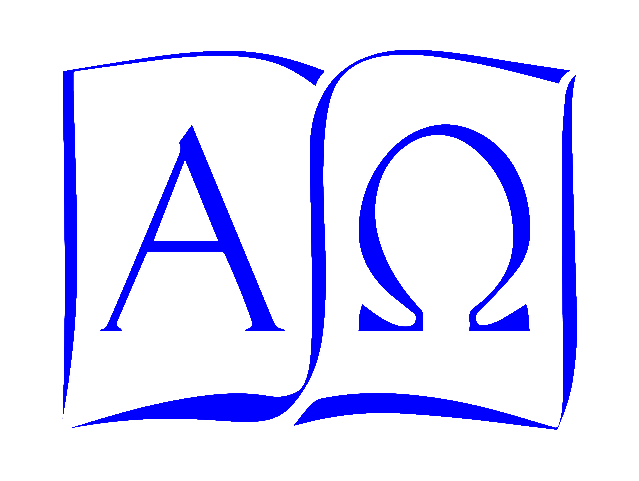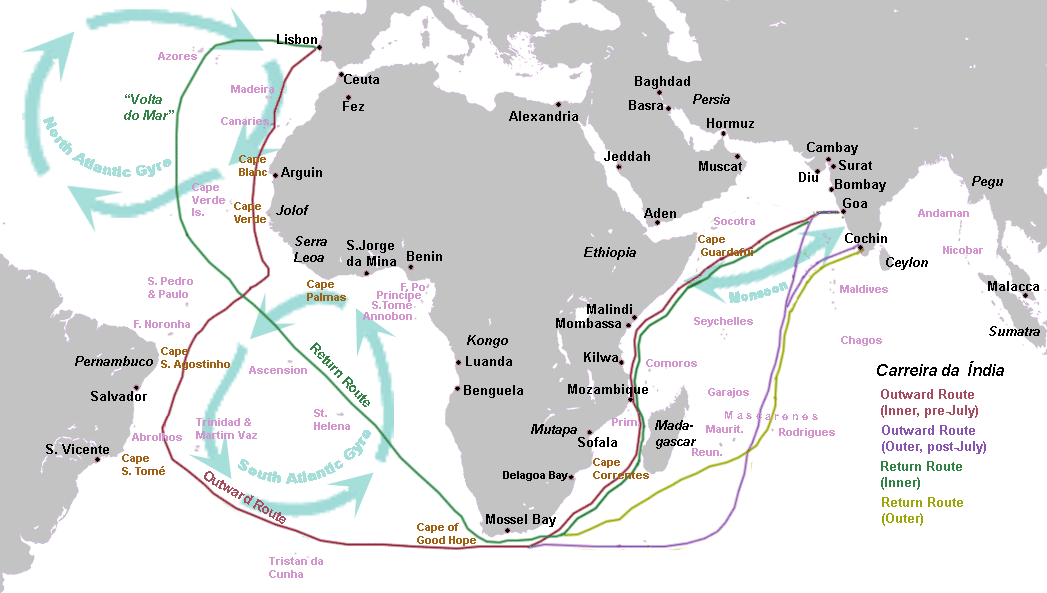On December 16, 1497, the Portuguese explorer Vasco da Gama reached the mount of the Great Fish River on the eastern side of the Cape of Good Hope in South Africa. Thus far had his predecessor Bartolomeu Dias come in 1488, but damage to the ships and dwindling supplies forced Dias to turn back. We know very few details about Dias’ voyage, since the logs and contemporary records were destroyed in the Great Lisbon Earthquake of 1755. But da Gama had access to these when he planned his voyage, and was able to surpass Dias and reach India, which he did in May of 1498.
It was the first time a European fleet had reached the Asian mainland by a sea route, and it was hugely important for Europe, and Portugal in particular, since it opened up a trade route with India, China, and Southeast Asia that didn’t require a voyage across the embattled Mediterranean followed by a multi-year overland trek through Central Asia on routes held by the Ottoman Turks.
It would be presumptuous to assume that no trade existed between the lands around the Indian Ocean prior to da Gama’s voyage. Archaeological records and the discovery of Indonesian foods in east Africa and exotic African goods in China give evidence of a trade going back to the early Egyptian dynasties. One of the fascinating documents from the early Roman empire, the Greek Περίπλους τῆς Ἐρυθρᾶς Θαλάσσης or Periplus (Logbook) of the Erythraean Sea, gives us a traveler’s report of the cities and locations along the east African coast, the Arabian Peninsula, and the east coast of India around AD 60.
For da Gama’s outbound voyage, we have the diary of one of the educated but unidentified shipmen. He notes the moment when they reach the limit of Dias’ earlier voyage:
We were then already beyond the last discovery made by Bartholomeu Dias. On the next day [December 17], till vespers, we sailed along the coast before a stern-wind when, the wind springing round to the east , we stood out to sea. And thus we kept making tacks until sunset on Tuesday [December 19], when the wind again veered to the west. We then lay to during the night, in order that we might on the following day examine the coast and find out where we were.
The diary goes on to describe the people and places the fleet encounters, as well as the stories they learn of kingdoms and countries further inland:
We were told, moreover, that Prester John resided not far from this place; that he held many cities along the coast, and that the inhabitants of those cities were great merchants and owned big ships. The residence of Prester John was said to be far in the interior, and could be reached only on the back of camels. These Moors had also brought hither two Christian captives from India. This information, and many other things which we heard, rendered us so happy that we cried with joy, and prayed God to grant us health, so that we might behold what we so much desired.
Anyone who has read Herodotus will hear echoes of him in the detailed descriptions of the people, their clothing, foods, and customs. There is the same sense of wonder and discovery in these encounters that confirm or confound our expectations, and that entice us from the safety of what we know. Even if the “seas beyond” are densely populated, even if they are well-known to others who have long traveled their routes, they are unknown to us, and will fascinate us, and change us.

